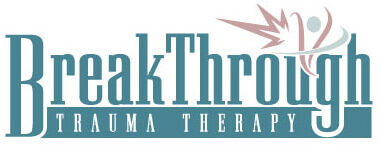Have you ever heard the term Stockholm Syndrome? If you have, what comes to mind?
Imagine being in a physically, mentally, and emotionally abusive relationship. While most people on the outside view your situation as simple as the cliche advice they give, Just leaving brings about more sadness, anxiety, and confusion than you can handle.
The sound of your partner coming home terrifies you but yet you crave their presence. You stay up late at night wishing someone would see your pain and come rescue you, but then reject the help of a social worker when they stop by.
Stockholm syndrome is incredibly confusing for everyone involved. Your loved ones don’t understand why you try to protect your abuser, and deep down you’re not quite sure either.
But, is Stockholm syndrome the same as a trauma bond? What exactly is Stockholm syndrome and can you recover from it? Let’s chat about it.
What Is Stockholm Syndrome?
Stockholm syndrome occurs when a victim of abuse or kidnapping begins to develop strong positive emotions about their abuser. Someone who is experiencing Stockholm syndrome may dread the presence of their captor but simultaneously feel loving, empathetic, or understanding towards them.
In addition, a victim may begin to display a shield of protectiveness around their abuser, developing negative emotions towards anyone who attempts to save them. This may be family members, friends, or the police.
A majority of individuals who suffer from Stockholm syndrome are held for many days and experience a close relationship with the perpetrator. While researchers aren’t exactly sure why Stockholm syndrome occurs, it’s thought to be an evolutionary trait passed down from our early ancestors.
What Is a Trauma Bond?
Trauma bonding is a more general term used to describe the attachment a victim may feel for their abuser. This bond is generated through a toxic cycle of abuse, and reconciliation.
This is often the case in domestic violence situations. While the abuser may hurt the victim, they also show kindness and care towards them afterward. This then strengthens the trauma bond.
Trauma bonds are what can make leaving an abusive relationship so difficult. While many victims know they should leave, the force of a trauma bond is incredibly powerful.
Every time an abuser comes back around after abuse, our brains are flooded with dopamine. This tactic is called inconsistent reward. Think of gambling at a casino. You lose, and lose, and lose again but then you win. This joy leaves you coming back for more. Abusive relationships that involve trauma bonds are addicting.
Is Stockholm Syndrome The Same As a Trauma Bond?
While Stockholm syndrome and trauma bonds have incredibly similar symptoms, Stockholm syndrome isn’t exactly the same thing. Yes, they both share the same empathy and affection a victim feels towards their abuser, however, Stockholm syndrome occurs when an individual feels their life is in danger.
This is why Stockholm syndrome often occurs the most in victims of kidnapping. It’s a coping mechanism used to keep ourselves alive.
Trauma bonds, on the other hand, are emotional attachments that arise due to abuse and manipulation that aren’t always life-threatening.
It’s incredibly obvious to see their similarities and one could easily say Stockholm syndrome is a type of trauma bond, just a more extreme one.
Extreme Cases of Stockholm Syndrome:
Not only is Stockholm syndrome confusing and complex, it’s incredibly tragic. In most cases, the victims fully believe what they’re feeling to be true.
To give you a better idea of just how heartbreaking Stockholm syndrome can be, here are a few examples that made the news.
Steven Stayner:
One of the earliest known cases of Stockholm syndrome occurred back in 1972 when Steven Stayner was abducted by two men while riding his bike. Over the years Stayner was physically, emotionally, and sexually abused by these men.
One of the men, Kenneth Parnell, invoked this trauma bond with Steven by telling him he was his new father and even went as far as to make Steven call him dad.
Eventually, Steven was enrolled in school under a fake name and was allowed to go about freely as any teenager does. Yet, he never tried to escape. Once he was discovered as the missing boy from years ago he still never explained why he stayed with his captors despite the many opportunities to free himself
Patricia Hearst:
In 1974, Patricia Hearst was attacked in her apartment by a group of men claiming to be the Symbionese Liberation Army, terrorist group. Hearst was held captivated and brutally abused for over a year by her captors until she eventually came out to the world and announced she too, would be joining this terrorist group alongside them.
After this announcement, she willingly took part in bank robberies, assaults, and other crimes until the FBI found her and the rest of the group a year later.
Colleen Stan:
One of the most brutal cases of Stockholm syndrome involved 20 year old Colleen Stan who was abducted by her kidnappers while hitchhiking in California. Stan was abducted by a couple who then held her captive as their slave.
Stan was forced into a box for 23 hours of the day, only being referred to as a ‘piece of furniture’. Despite the horrific abuse that occurred at the hands of her kidnappers, when given the opportunity to run and flee, Colleen didn’t take it.
In fact, she met her abductor’s family, took photos with them, and told them how happy they all were together. It wasn’t until years later when the wife of her kidnapper finally forced her to leave out of guilt.
Is Recovery From Stockholm Syndrome Possible?
 In nearly every case of Stockholm syndrome, professional mental health assistance is needed. Much like in cases of PTSD, individuals who have gone through this disorder experience nightmare, flashbacks, and extremely confusing emotions after being separated from their abuser.
In nearly every case of Stockholm syndrome, professional mental health assistance is needed. Much like in cases of PTSD, individuals who have gone through this disorder experience nightmare, flashbacks, and extremely confusing emotions after being separated from their abuser.
Thankfully, Stockholm syndrome is recognized as a survival mechanism meaning recovery is possible. As with any trauma bond, with intention, motivation, and professional guidance there is hope for even the worst situations.
Therapy is an excellent choice for anyone with a trauma bond as it can help you process your emotions, see things from another perspective, and teach you new beneficial coping mechanisms.
It is nearly impossible to heal from Stockholm syndrome if you’re still in an active relationship with your abuser, however. The first step to breaking any kind of trauma bond is to separate yourself as far as you can from the situation. Only then will you be able to think with a clear head.
A Few Final Thoughts:
So, is Stockholm syndrome the same thing as a trauma bond? It’s similar in that a victim may eventually develop a strong attachment or feelings towards their abuser, attempt to protect their abuser, or reject any help to leave a toxic situation. However, Stockholm syndrome is a more extreme level of a trauma bond as it happens in circumstances where an individual’s life is at risk. From an evolutionary standpoint, those who develop Stockholm syndrome do so to survive, yet get caught up in the emotions of it.
While Stockholm syndrome still needs much research, the treatment options are quite similar to those suffering from PTSD. Talk therapy, psychoeducation, and separation from the abusive situation are all necessary in order to reverse the damaging effects of Stockholm syndrome.
Click here for more on Trauma Therapy.
Resources:
- https://my.clevelandclinic.
org/health/diseases/22387- stockholm-syndrome - https://www.goodtherapy.org/
blog/psychpedia/stockholm- syndrome#:~:text=A%20person% 20who%20experiences% 20Stockholm,parties%20who% 20are%20attempting%20rescue. - https://unfilteredd.net/
trauma-bonding-vs-stockholm- syndrome/

